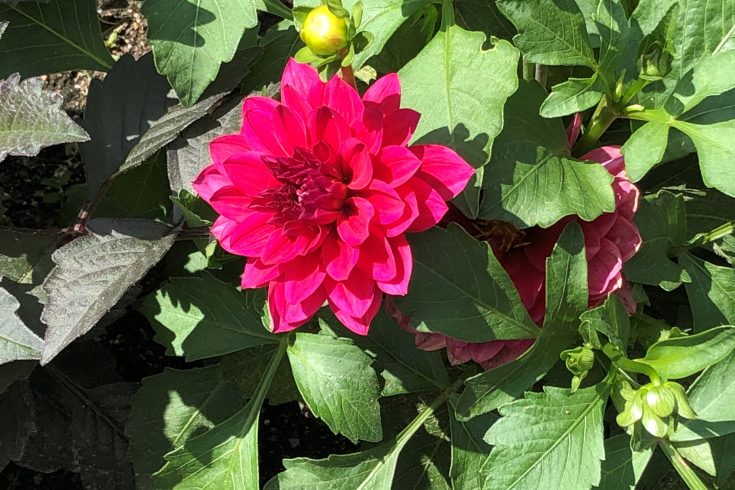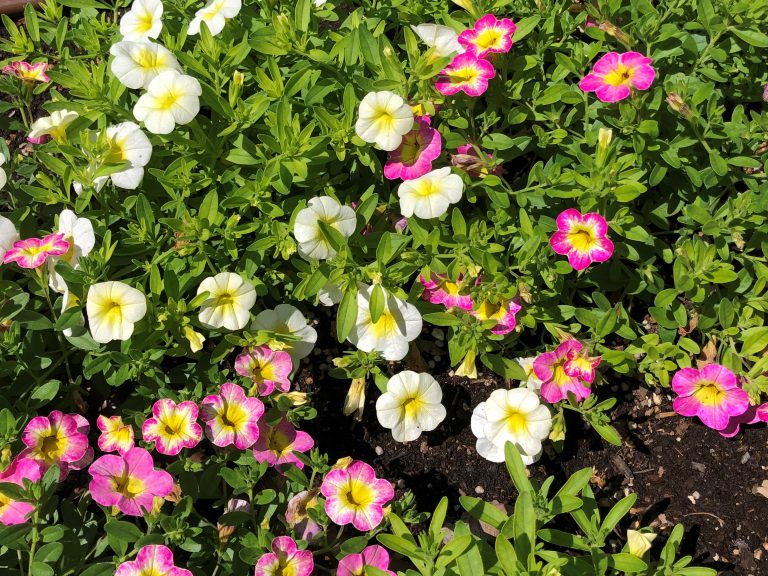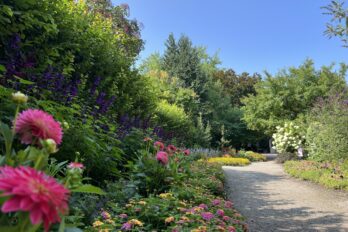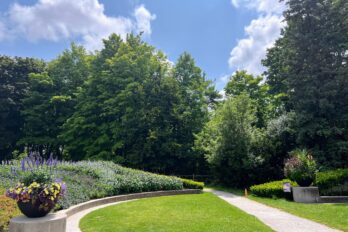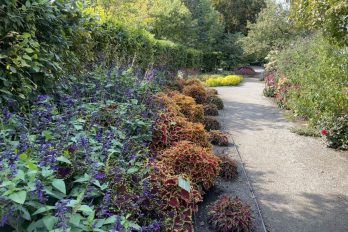By Veronica Sliva
It’s been nearly a month since the Trial Garden was planted. Since then we have had hot days, cold days, wet days, and dry days. No matter what weather Mother Nature doled out, the plants just carried on and are settling in nicely. Some beds are looking more mature than others, but that is to be expected. By the end of summer, they will have caught up with one another and all will be competing for best in show. At the moment I am rooting for the impatiens bed. It is already starting to look like it will be a show stopper. Take a look…
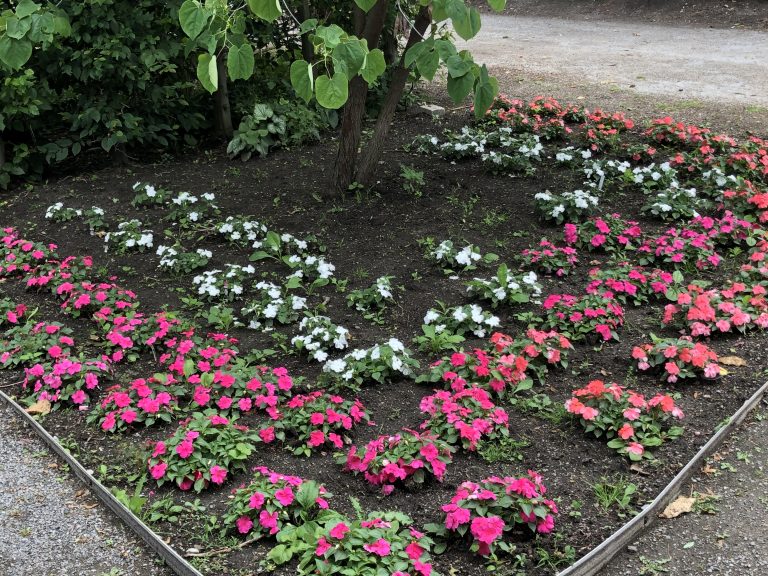
Plants in the Trial Beds Attract Pollinators
According to the dictionary, “Pollination is the act of transferring pollen grains from the male anther of a flower to the female stigma. The goal of every living organism, including plants, is to create offspring for the next generation. One of the ways that plants can produce offspring is by making seeds.”
Plants need pollinators such as butterflies, bees, a variety of different insects and birds to accomplish this important task.
Flower shape and size determine what plants attract different kinds of pollinators. For example, insects that aren’t agile in flight (like beetles) prefer flowers that are larger and more open because the flatter petals provide an easy landing pad that allows them to rest or feed and make contact with the flower’s pollen. Other plants like salvia have long tubular blooms that allow hummingbirds with long narrow bills to get at the nectar at the bottom of the tube (and brush up against the pollen while doing so).
The Trial Gardens have several plants that are known magnets for pollinators. Let’s have a look:
Calibrachoa Cha Cha
In the Trial Gardens, Calibrachoa Cha Cha, with their small petunia-like blooms, are beginning to create a lovely carpet effect. These plants are great for attracting bees and butterflies to your garden, not only in summer but well into fall because they can take
cooler conditions. Calibrachoas grow only a few inches high, but because they spread so generously they are excellent for hanging baskets where you can enjoy the flowers at eye level and also get the best view of the butterflies enjoying them too!
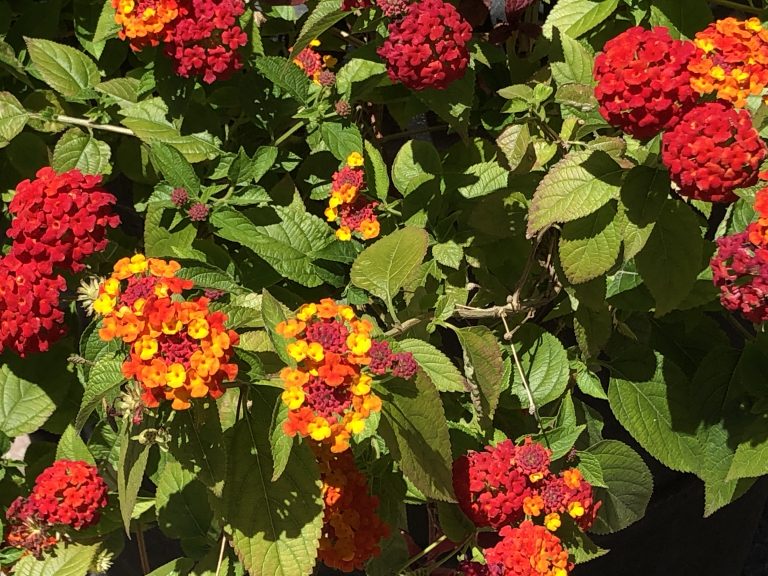
Lantana Shamrock Orange Flame
New for 2022, this lantana looks like it is on fire and is already blooming like crazy. Lantana is a sun-loving, warm-weather plant that’s great for attracting butterflies. Plant lantana where they get six or more hours of sun to keep them blooming all summer. They are magnets for butterflies and offer it all… sweet nectar for food, attractive scent, bright colour and a flower form for easy landing. Lantana are one of the best choices for fall nectar flowers.
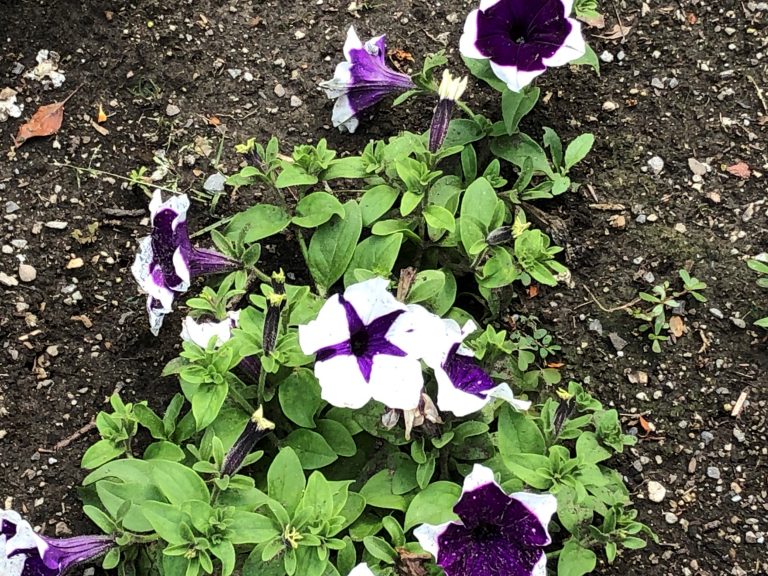
Petunia Mainstage Glacier Sky
Petunias are not generally considered key pollinators. However, hummingbirds do like to visit them, especially in late summer and early fall. The multiple blooms on just one plant mean there are always blooms available for any nectar-seeking pollinator.
Mainstage Glacier Sky is a vigorous, trailing type with huge blooms in a deep blue hue and a white picotee edge, speckled with white stars. They are great in the front of the border and also in window boxes and hanging baskets too.
Angelonia Archangel White
The little flowers of Angelonia Archangel White are also known as the “summer snapdragon” and are loved by bees. The blooms of these easy-care annuals have
‘hairs’ inside their blooms which produce an oil that is attractive to certain bees (Centris nitida). They seek out floral oils instead of nectar. Angelonias are heat-lovers and drought tolerant. The fruity scent of angelonia is a bonus and is especially strong on hot summer evenings. A must in every garden!
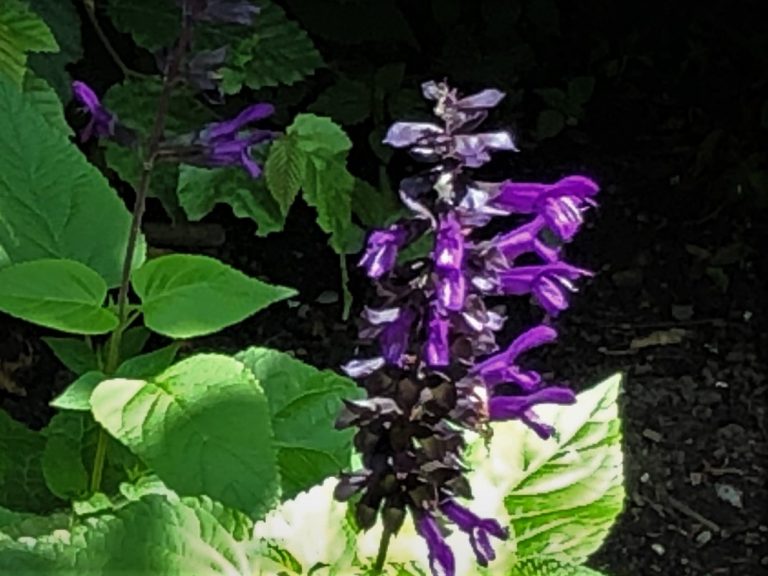
Salvia Purple and Bloom
They aren’t at their full height yet in the Trial Gardens (102-122 cm, 40-48 inches), but the deep purple flowers of Salvia Purple and Bloom have started to emerge on sturdy striking black stems. You may be surprised to find out that the foliage is quite fragrant. This plant thrives in full or partial sun, loves high heat and humidity and is a hummingbird magnet too. What more can you ask for in an annual for summer?
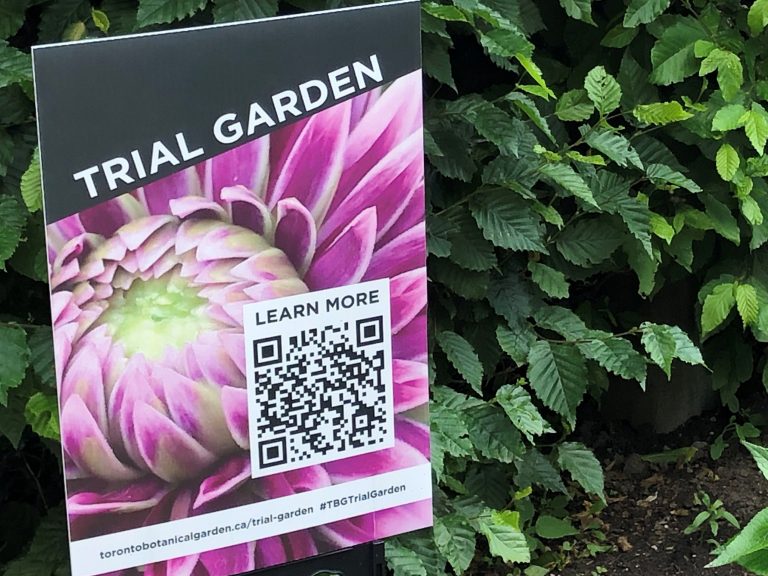
Want to know more about the Trial Garden?
When visiting the Trial Garden at the TBG you will notice signs with a QR (Quick Response) code inviting you to learn more. If you have a smartphone, just open your camera app and hold it close to the sign. You’ll be taken to a link that allows you to instantly access information about the Trial Garden. It couldn’t be easier!

